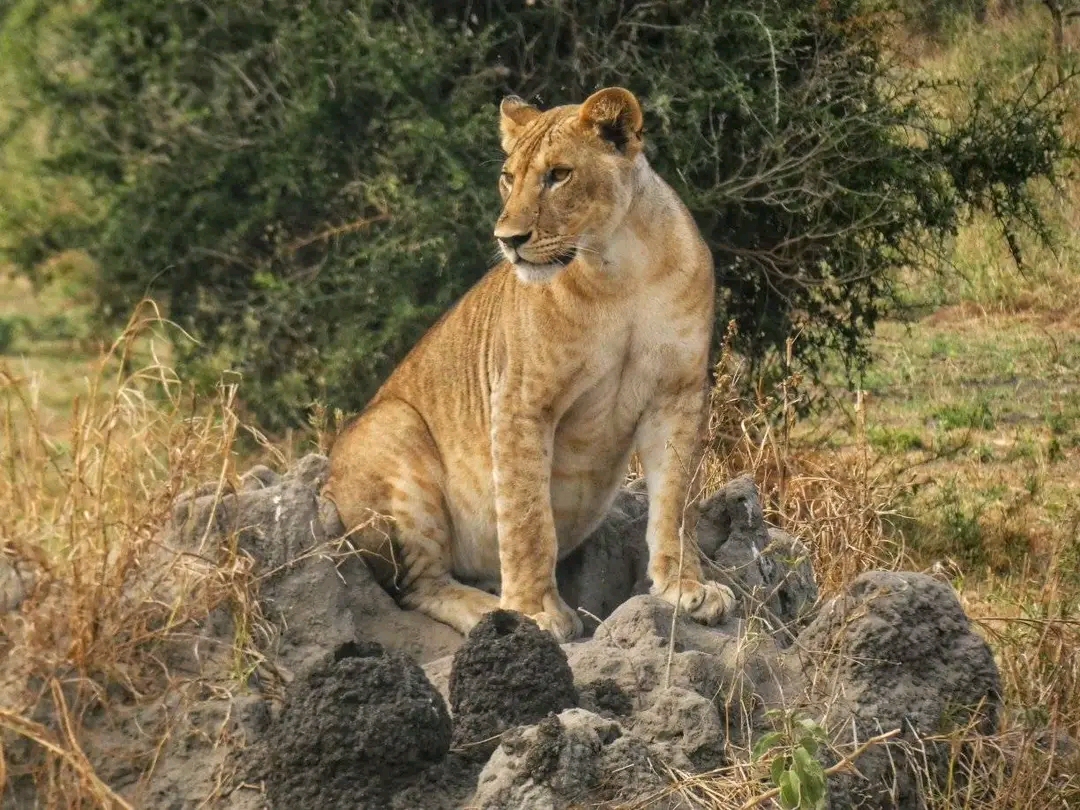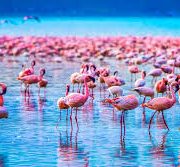
Mikumi National Park – Tanzania’s Hidden Wildlife Gem
Mikumi National Park, located in the southeastern part of Tanzania, is one of the country’s most accessible and underrated safari destinations. Just about 283 kilometers (175 miles) west of Dar es Salaam and adjacent to the Selous Game Reserve (now part of Nyerere National Park), Mikumi offers a rich and rewarding wildlife experience that rivals better-known parks yet without the crowds.
Covering over 3,230 square kilometers, Mikumi is Tanzania’s fourth-largest national park and a gateway to the southern safari circuit. With open plains, baobab trees, miombo woodlands and diverse wildlife, Mikumi is often referred to as a “mini-Serengeti” because of its strikingly similar landscapes and game-viewing potential.
🦓 Unspoiled Wilderness and Abundant Wildlife
Mikumi is home to a wide variety of wildlife that is easy to spot, particularly in the Mkata floodplain a vast savannah area that dominates much of the park. This open grassland is ideal for game viewing, and visitors frequently encounter elephants, buffaloes, giraffes, zebras, wildebeests, impalas, elands and hartebeests. One of Mikumi’s most famous sights is its unique subspecies of giraffe, whose patterns resemble those found in Masai giraffes but with noticeable distinctions. These elegant creatures are a common sight and often pose for unforgettable photographs.
Predators are also present and include lions, which are often seen lounging on termite mounds or under trees, leopards, hyenas, and the elusive African wild dog. Although not always easy to spot, patient visitors are sometimes rewarded with sightings of these rarer species.
🐊 Waterholes, Hippos, and Birdlife
Mikumi features several watering holes that attract wildlife throughout the day, especially during the dry season. Hippo pools, located near the main road, allow visitors to observe hippos up close as they wallow in water and interact with each other. These pools are also favorite spots for crocodiles and water birds.
Birdwatchers will find Mikumi to be a paradise, with over 400 recorded bird species. Colorful and exotic species like lilac-breasted rollers, yellow-throated longclaws, martial eagles, Bateleur eagles, hornbills and Secretary birds are commonly seen. The park is also a haven for migratory species that visit between November and April.
🌿 Scenic Landscapes and Rich Ecosystems
Mikumi’s beauty lies in its variety of landscapes. The Mkata plains, mountain ranges, acacia woodlands, and river systems together form a diverse ecosystem that supports a rich array of flora and fauna. In the distance, the Uluguru Mountains and the Rubeho Highlands create a dramatic backdrop that enhances the park’s visual appeal.
The miombo woodlands, characterized by towering trees and thick vegetation, are home to some of the park’s shyer animals like bushbucks, sables and greater kudus. In contrast, the open plains provide panoramic views and excellent opportunities for spotting predators and large herbivores.
🚗 Accessibility and Ideal for Short Safaris
One of Mikumi’s greatest advantages is its easy accessibility. Located along the main road connecting Dar es Salaam to Zambia, Mikumi can be reached within 4–5 hours by car or a short flight, making it an ideal destination for weekend getaways, short safaris, or add-ons to longer southern circuit adventures.
Its proximity to Dar es Salaam means visitors can experience an authentic Tanzanian safari without having to venture deep into the remote wilderness making Mikumi perfect for first-time safari-goers, families, or business travelers looking to add a nature experience to their trip.
🏕️ Accommodation Options
Mikumi offers a variety of accommodations to suit different budgets and preferences. Visitors can choose from luxury lodges, tented camps, budget-friendly bandas, or even campsites for those seeking a more rugged, immersive experience. Many lodges are strategically placed near the park’s entrance or offer views of waterholes and plains, allowing for wildlife sightings even from the comfort of your room.
🛡️ Conservation and Community Involvement
Mikumi National Park plays a vital role in Tanzania’s conservation efforts, especially as part of the larger Selous ecosystem. Efforts to protect endangered species, manage human-wildlife conflict and support nearby communities through tourism revenue are ongoing. Visiting Mikumi helps contribute to sustainable tourism and the preservation of Tanzania’s natural heritage.
📅 Best Time to Visit
Mikumi is a year-round destination, but the dry season (June to October) is considered the best time for wildlife viewing, as animals gather near water sources. The wet season (November to May) transforms the landscape into a lush green paradise and is ideal for birdwatching and photography, though some roads may become difficult to access.
🌍 Why Choose Mikumi National Park?
-
Perfect for quick safaris from Dar es Salaam
-
Offers a Serengeti-like experience with fewer crowds
-
Excellent wildlife viewing in open plains
-
Unique subspecies of giraffes and varied birdlife
-
Affordable and accessible for all types of travelers
Conclusion
Mikumi National Park may not always steal the spotlight like Serengeti or Ngorongoro, but it is truly a hidden gem in Tanzania’s safari circuit. With stunning landscapes, abundant wildlife and easy access, Mikumi offers an authentic and memorable safari experience.
Whether you’re a seasoned adventurer or a curious traveler on a short schedule, Mikumi promises raw beauty, rich biodiversity, and unforgettable encounters with the wild without venturing too far from the city. A visit to Mikumi with the right guide opens the door to a world where nature reigns supreme.
Recent Posts
🌿 Lake Manyara National Park – Tanzania’s Hidden Gem of Biodiversity
Guardians of Ancient Traditions – The Hadzabe Tribe of Tanzania
Tarangire National Park – Tanzania’s Timeless Wilderness
All Categories

Thailand





